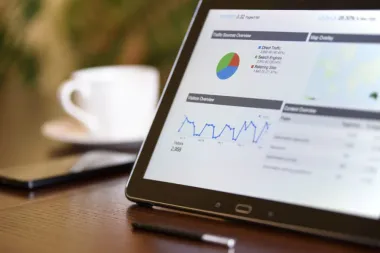Many restaurants and takeaway businesses are now moving away from third-party aggregators due to the negative effects of partnering with these platforms.
Introducing delivery and collection options through digital ordering services clearly represents a major opportunity for hospitality businesses of all sizes. This has of course taken on heightened significance during the past year, with coronavirus changing society so drastically and forcing dine-in facilities to close for long periods. Struggling to survive in the circumstances, pivoting to takeaway through online ordering has been a real lifeline for many businesses.
In many cases, online ordering gives restaurants and takeaways a whole new stream of income and a great chance to increase their sales. Worldwide, revenue from online food delivery is projected to reach some €134 billion in 2021, with 11% year-on-year growth. So there's big money at play in the industry.
However, with a multitude of digital options now available, consumers are becoming increasingly conscious of delivery costs and have greater expectations about the entire delivery experience from start to finish.
Many restaurants which initially turned to aggregator platforms for a quick digital ordering solution are now rethinking that decision, given all the downsides that come with it.

How aggregators work:
Customers order food from restaurants and takeaways listed on third-party aggregator apps and websites, who contract drivers to make the deliveries using their own transport. These aggregator services earn money through restaurant commissions, delivery fees, or both.
Several big third-party aggregators platforms now dominate this space - Just Eat, Deliveroo, Uber Eats, and others.
However, with consumers very much inclined to order directly from a restaurant’s own website or app where they have the option, more and more restaurants are starting to take ownership of their own online ordering and delivery rather than relying on the aggregators. We've seen this firsthand over the past couple of years, with businesses coming to Flipdish in large numbers to launch their own in-house ordering services.
So let's look at some of the reasons why restaurants are moving away from aggregator platforms in more detail.
1. High costs taking their toll
The cost of using third-party delivery services can be severely prohibitive. Turning a profit in the food industry is already difficult in the current climate, and partnering with delivery aggregators squeezes margins even tighter. Restaurants can end up paying up to 30% in fees for each order placed through these apps.
And most customers don't even realise this when they order. In research we carried out in 2020, the vast majority (89%) of the people we asked said that, knowing about the fees restaurants face, they would order directly from the restaurant as opposed to using an online marketplace.

2. Loss of control
Misinformation on third-party portals can cause major issues - and the customer will generally blame the restaurant for any problems occurring during the order or delivery process. For example, sometimes orders are placed through third-party delivery services in a region that is out of range and cannot be delivered. By contrast, having control over your menu and details across your website and app means you can avoid losing dissatisfied customers.
By outsourcing the ordering and delivery process, restaurants lose control of their brand from the moment the food leaves the restaurant to when it arrives at the customer’s home. You risk damaging continuity, reliability, accuracy, delivery timing and food presentation. That all hurts your reputation and brand - and you're powerless to control it.
3. Customer relationship and loyalty
When using third-party aggregators, you also lose the direct relationship with your customers. That's a hugely negative consequence, as the opportunity to build long-term customer loyalty is gone. Regular, loyal customers are the lifeblood of any hospitality business. Indeed, research shows that increasing your number of loyal customers even by 5% can grow your sales by up to 75%. So it's really the best way to build a strong and sustainable business.
You can't gather all-important data through using the aggregators. Instead, they build up data and use it to grow their own brands instead of yours. By contrast, having your own online ordering system allows you to gather crucial customer data to drive your future marketing and loyalty efforts.

4. Customer preference
Many customers prefer to order directly from a restaurant’s own website or app. Familiarity, secure payment and reliable delivery times are factors which affect the customers experience greatly.
They also want to play their part to ensure the survival of their favourite local businesses during these challenging times. High aggregator fees threaten their survival. Our research showed that over 90% of people who order from an online marketplace more than once a week would order directly from restaurants, in light of the high marketplace fees.

Flipdish lowers costs and puts you back in control
Using the Flipdish online ordering system gives control back to you, reduces costs and provides the tools needed for sustainable growth. It allows restaurants to operate mutually beneficial food delivery and collection services for their customers. It gives you complete control over the customers experience, while you retain vital customer data for future loyalty and marketing campaigns. This helps you to build long-lasting, profitable relationships with your customers, long after their initial order.


